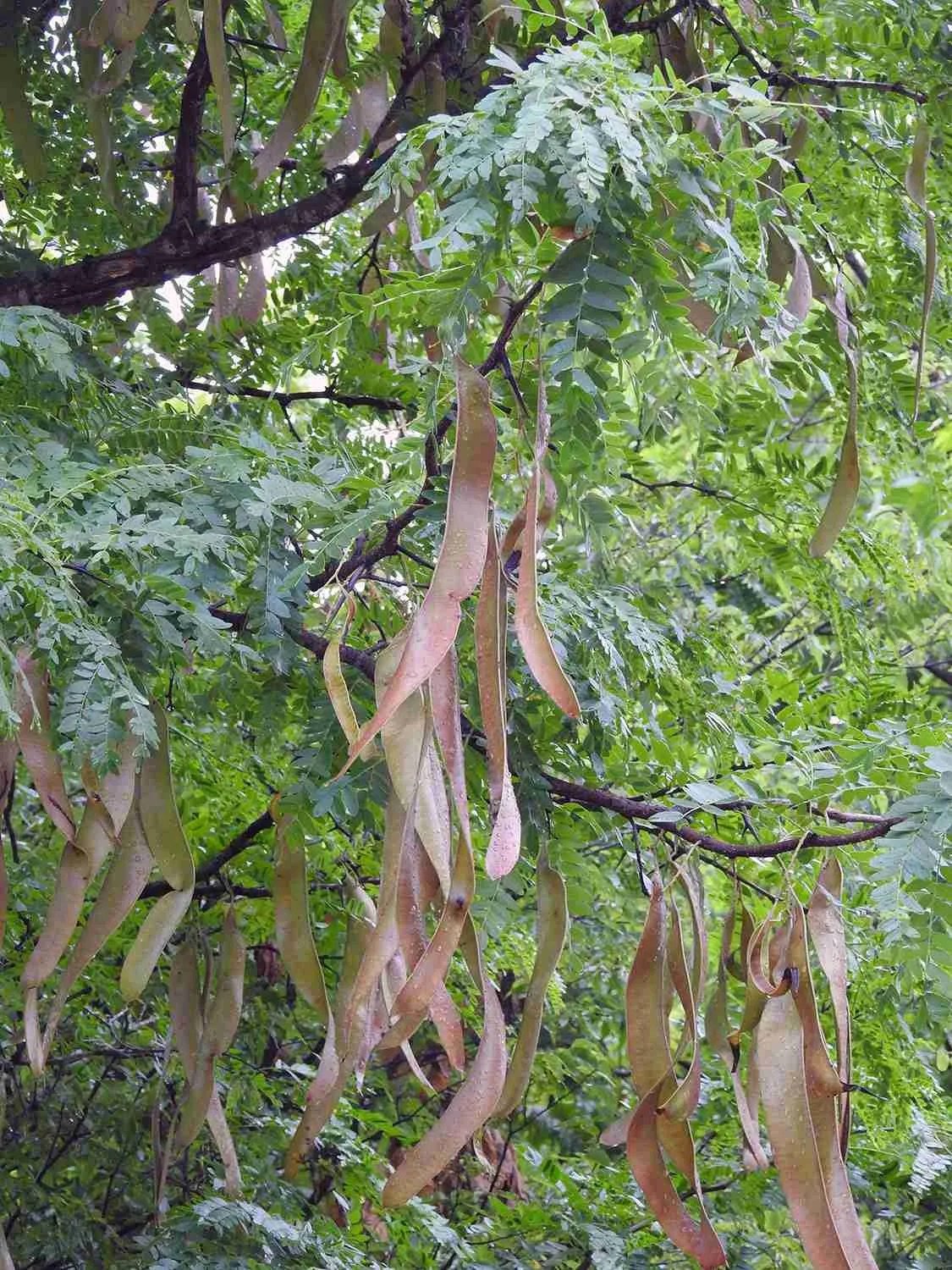Thornless Honeylocust
Gleditsia tricanthos var. inermis. The light, dappled shade cast by the lacy foliage of thornless honey-locust is only one of its virtues. It also is durable and adaptable, tolerating a wide range of soil conditions as well as drought, and road salt, and has a lovely yellow fall color. As a result, honey locust is widely (some would say over) used in city and suburban landscapes. The native species of honey-locust has large thorns on its stems and bark. For this reason, thornless honey-locust is most commonly sold. This variety can be found growing in the wild and reaches the same height as its thorny cousins. Many of the cultivars of this variety are sold in the nursery trade and typically do not have thorns and many times do not have seedpods. In the fall, the leaves turn yellow.
Honey locust native to to the east-central United States. A fast growing, large tree typically reaching heights from 40-70 FT and 25-40 FT in width. A part of the common name, honey, is derived from the honey-like substance found in the pods which has a great potential as a supplemental feed crop for grazing animals. Sugar concentrations in some pods can often be above 30%.
The wood from this tree is often used for fence posts, railroad ties, furniture, tool handles, and fuel. The fruit is edible by wildlife, which attracts pollinators and makes it a welcome addition to any wildlife garden. Since it lacks thorns, it makes it an ideal shade tree for a children's garden.
Sold as bare root trees 24-36” tall.
Gleditsia tricanthos var. inermis. The light, dappled shade cast by the lacy foliage of thornless honey-locust is only one of its virtues. It also is durable and adaptable, tolerating a wide range of soil conditions as well as drought, and road salt, and has a lovely yellow fall color. As a result, honey locust is widely (some would say over) used in city and suburban landscapes. The native species of honey-locust has large thorns on its stems and bark. For this reason, thornless honey-locust is most commonly sold. This variety can be found growing in the wild and reaches the same height as its thorny cousins. Many of the cultivars of this variety are sold in the nursery trade and typically do not have thorns and many times do not have seedpods. In the fall, the leaves turn yellow.
Honey locust native to to the east-central United States. A fast growing, large tree typically reaching heights from 40-70 FT and 25-40 FT in width. A part of the common name, honey, is derived from the honey-like substance found in the pods which has a great potential as a supplemental feed crop for grazing animals. Sugar concentrations in some pods can often be above 30%.
The wood from this tree is often used for fence posts, railroad ties, furniture, tool handles, and fuel. The fruit is edible by wildlife, which attracts pollinators and makes it a welcome addition to any wildlife garden. Since it lacks thorns, it makes it an ideal shade tree for a children's garden.
Sold as bare root trees 24-36” tall.
Gleditsia tricanthos var. inermis. The light, dappled shade cast by the lacy foliage of thornless honey-locust is only one of its virtues. It also is durable and adaptable, tolerating a wide range of soil conditions as well as drought, and road salt, and has a lovely yellow fall color. As a result, honey locust is widely (some would say over) used in city and suburban landscapes. The native species of honey-locust has large thorns on its stems and bark. For this reason, thornless honey-locust is most commonly sold. This variety can be found growing in the wild and reaches the same height as its thorny cousins. Many of the cultivars of this variety are sold in the nursery trade and typically do not have thorns and many times do not have seedpods. In the fall, the leaves turn yellow.
Honey locust native to to the east-central United States. A fast growing, large tree typically reaching heights from 40-70 FT and 25-40 FT in width. A part of the common name, honey, is derived from the honey-like substance found in the pods which has a great potential as a supplemental feed crop for grazing animals. Sugar concentrations in some pods can often be above 30%.
The wood from this tree is often used for fence posts, railroad ties, furniture, tool handles, and fuel. The fruit is edible by wildlife, which attracts pollinators and makes it a welcome addition to any wildlife garden. Since it lacks thorns, it makes it an ideal shade tree for a children's garden.
Sold as bare root trees 24-36” tall.




